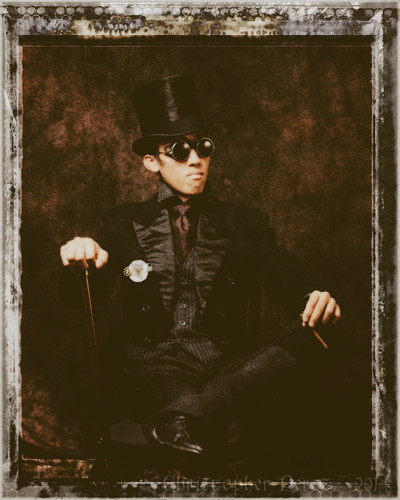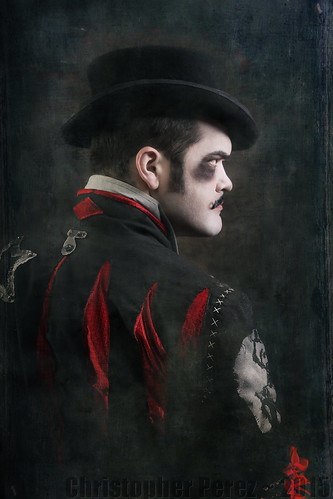What I would like to do here is share a few things that I've learned. The following posts expand on materials I've generated for portraiture classes that I teach. This series consists of three separate blog entries; equipment, lighting, and art.
I have been photographing people for fifty years. Yet it's only recently that I have come to feel I can understand and control the most important aspects of the craft.

The Grand Question -
Looking back 50 years, what would I have liked to have known that would've helped me make better progress swiftly and with more confidence?
For years I have concentrated my attention on the equipment and tools of making images of people. This has meant I've paid an inordinate amount of attention to cameras, lenses, lights, and backdrops. These things were not enough, but one needs to begin somewhere, right?
To begin to answer this question I would like to propose a cost effective approach that illustrates just how little investment in tools it takes to create wonderful portraiture. This approach is flexible enough that it can be expanded to include fashion and pictorial photography.
Equipment List -
Sensor sizes -
Camera/Lens Costs (as seen in eBay completed auctions for good, clean used equipment) -
In Total -
I have been photographing people for fifty years. Yet it's only recently that I have come to feel I can understand and control the most important aspects of the craft.

The Grand Question -
Looking back 50 years, what would I have liked to have known that would've helped me make better progress swiftly and with more confidence?
For years I have concentrated my attention on the equipment and tools of making images of people. This has meant I've paid an inordinate amount of attention to cameras, lenses, lights, and backdrops. These things were not enough, but one needs to begin somewhere, right?
Equipment List -
- A camera that...
- offers manual mode as a shooting mode option
- comes with a "hot shoe" or the ability to control a flash triggering device
- Standard focal length lens (in full frame terms, anything from 24mm to 85mm will do, including standard "kit" zoom optics)
- Electronic flash that is separate from the camera - often called an off-camera or remote flash
- Remote flash trigger - that sits on the camera and triggers the flash remotely
- Photo "bounce" umbrella - with "shoot thru" capabilities as an option
- Tripod-stand to hold the flash and umbrella
Sensor sizes -
Given the present state of imaging technologies, how many mega-pixels a camera has may not be important. Any camera with 12 mega-pixels will give you a print that out-resolves what your eyes are capable of up to 11x17 inches.
If your goal is to make prints larger than 11x17 inches, then perhaps a sensor with more than 12 mega-pixels would be beneficial (as well as easy to find). Keep in mind, too, that magazine reproduction sizes typically are much smaller than 11x17 inches and reproduction technologies may or may not yet approach the resolution limits of what our eyes can resolve (depending on the printing equipment). Computer/cell-phone/tablet displays have even less resolution than a magazine and a high quality print.
In short, mega-pixel counts are unimportant. The final image will be the only thing that matters.

If your goal is to make prints larger than 11x17 inches, then perhaps a sensor with more than 12 mega-pixels would be beneficial (as well as easy to find). Keep in mind, too, that magazine reproduction sizes typically are much smaller than 11x17 inches and reproduction technologies may or may not yet approach the resolution limits of what our eyes can resolve (depending on the printing equipment). Computer/cell-phone/tablet displays have even less resolution than a magazine and a high quality print.
In short, mega-pixel counts are unimportant. The final image will be the only thing that matters.

Monetary Considerations -
At the beginning of this post I suggested that making wonderful portraits need not cost very much. Here is an illustration of how inexpensively you to produce professional quality images.
Lighting Costs (new, not used, equipment as seen on Amazon US) -
- $35 - Flash unit (such as Newer TT560)
- $20 - Flash remote trigger (mounted on camera - such as Newer 16 channel triggers)
- $20 - Photo umbrella (bounce/shoot-thru)
- $20 - Tripod-stand
- $10 - Flash and Umbrella to tripod-stand adapter
- TOTAL - $105
Camera/Lens Costs (as seen in eBay completed auctions for good, clean used equipment) -
- $250 to $400 - DSLR with kit lens - such as Canon 1200D or Nikon 3300
or...
- $150 to $300 - Mirrorless with kit lens - such as Olympus EPL or EM, Panasonic GX, or Sony NEX
My Camera Kit -
One of the combinations I use and like is built on WiFi/NFC capable camera bodies and fixed focal length lenses. I can transfer images to a tablet, process the images quickly, and share them directly to photo-sharing platforms and social media sites. Since I'm retired and living on a fixed income, my money goes further buying used equipment locally off such sites as in-country eBay, Craigslist or Leboncoin.
One of the combinations I use and like is built on WiFi/NFC capable camera bodies and fixed focal length lenses. I can transfer images to a tablet, process the images quickly, and share them directly to photo-sharing platforms and social media sites. Since I'm retired and living on a fixed income, my money goes further buying used equipment locally off such sites as in-country eBay, Craigslist or Leboncoin.
- $175 - Sony NEX-5T body only (Wifi and NFC capable)
- $90 - Sigma 30mm f/2.8 EX DN E
- $10 - Hot shoe adapter for NEX
In Total -
The all up costs of building a portraiture system from scratch are between $250 to $500, give or take a few pennies. If you can tell a difference in image quality between photos taken using this low-cost approach verses images made using "pro" gear costing north of ten times more, I'll buy you a beer and take this post down.
In the next post I would like to talk about the a flexible lighting setup that is very good for portraiture.
2 comments:
Good recommendations Chris. Much as I still want new kit, it's refreshing to see older or used kit recommended. I've been using my old Fuji X-E1 with a $50 35mm manual lens as a street camera and it's still a pleasure to use.
Any thoughts on a minimum diffuser size (softbox or umbrella)? I know that the umbrella is most flexible and cost effective in theory, but boy is it a PITA sometimes!
PS. When are you coming to NYC for a beer?!
Thanks, Al. The old manual focus lenses for street photography sounds like just the ticket. Very nice, that.
As for the size of the light modifier, I think 22 inches would be a nice minimum. Anything larger than that and I think your light would become softer and perhaps more pleasing. It turns out, and I'll try to cover this in the next section/blog-entry, that if you place your light source rather close to the subject that your subject will be beautifully/softly illuminated. I'll try to cover the details of what I mean.
I know that umbrellas are a PIA. Setting up softboxes can (in my case) be even worse. I'm not sure there's a nice easy answer. If you like super soft light, bigger is better, and bigger can quickly become are bigger PIA. LOL!
Post a Comment